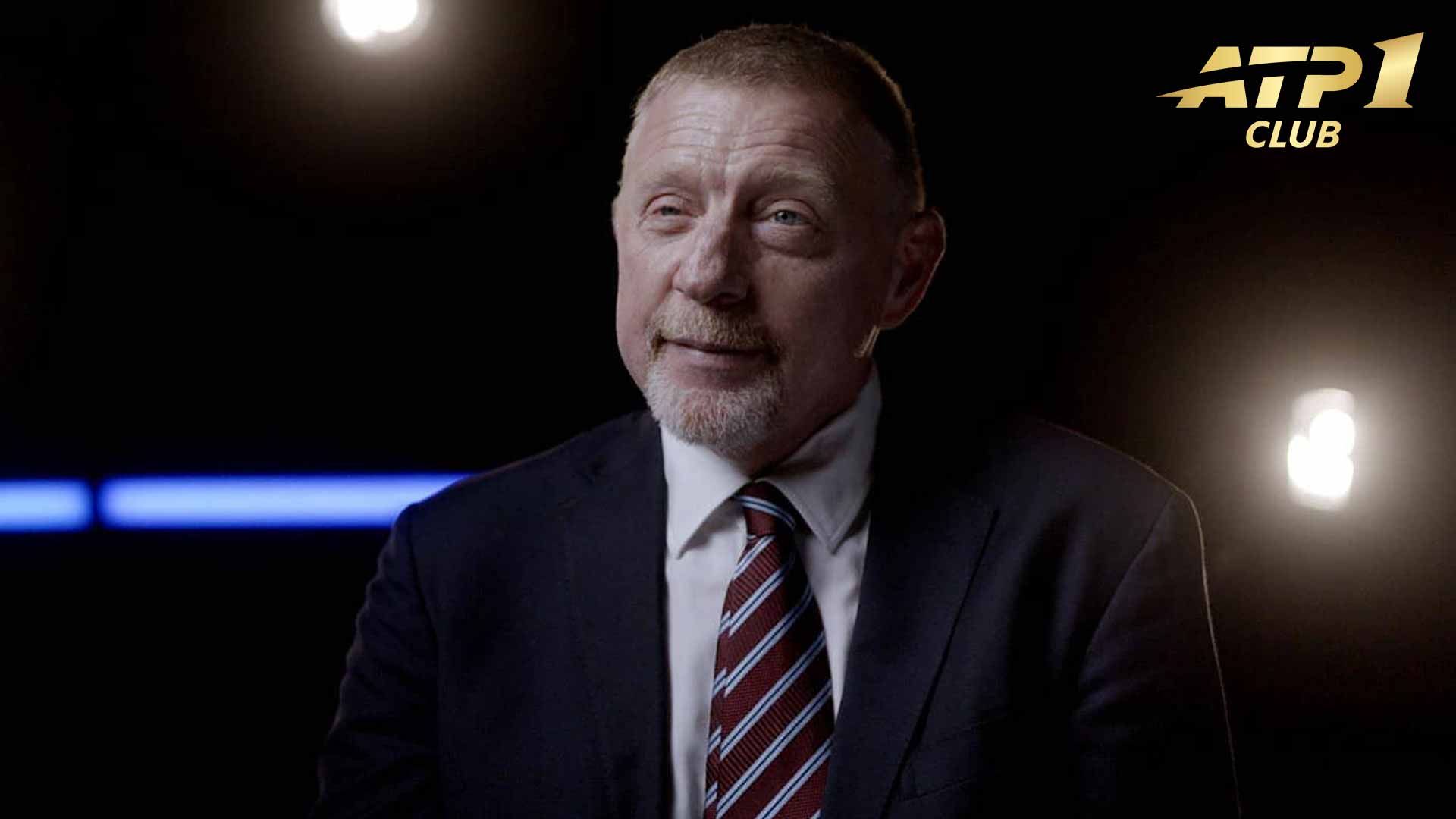

Boris Becker looks back on his extraordinary career with a deep appreciation for what was required to reach No. 1 in the PIF ATP Rankings. The German’s rise to the top was not just raw talent: It was the culmination of unrelenting hunger, a willingness to embrace the sacrifices and a touch of madness.
Having endured 109 weeks as the No. 2 player, Becker fittingly defeated his great rival Ivan Lendl in the 1991 Australian Open final and surpassed him to reach the top spot for the first time on 28 January of that year. Reflecting on joining the exclusive ATP No. 1 Club, Becker spoke candidly about the mindset needed to stand alone at the summit.
“You have to be a little bit crazy, a little bit egotistic in the sense that your life is tennis," said Becker, who amassed 49 tour-level titles during his career. "To be willing to do what it takes, your whole life has to be about tennis. There can’t be anything [more] important than winning the next tennis match.
“To keep that intensity for a long time is difficult, but I think we all have this crazy mentality of doing what it takes to win the match. It’s a great achievement [reaching No. 1], whether it’s one week, 12 weeks, or 350 weeks.”
Reaching the top spot is a rare feat: Only 29 players have ever climbed to No. 1, and Becker is well aware of the significance of his achievements. The six-time Grand Slam champion spent a total of 12 weeks atop the PIF ATP Rankings, which includes a nine-week streak between July and September 1991.
“Looking back, I was very honoured to present the No. 1 trophy to Jannik Sinner [in 2024] and to be part of this No. 1 Club,” said Becker. “All the other 28 players were heroes of mine. The reason I played was because of all these players. To be amongst this small group of players is very special, very unique.
“Everything you have is because of the game of tennis, and you appreciate it more now than when you’re in the middle of the storm. It’s very important for the young generation, to remind them who paved the way. We weren’t always playing for millions of dollars of prize money, but because of the success of an Ilie Nastase, John Newcombe, Bjorn Borg, John McEnroe — you name it — tennis became more and more popular.”
Becker took the tennis world by storm as a teenager, garnering attention by becoming the youngest player to win Wimbledon at just 17 years old in 1985. It was his maiden Grand Slam trophy and the first of back-to-back titles at the All England Club.
Yet it wasn’t until six years later, when was a five-time major winner, that Becker finally experienced the honour of becoming World No. 1.
“I was 18 years old when I became No. 2 in September of 1986,” Becker recalled. “I was a double Wimbledon champion, I thought my world was perfect, but there was a guy called Ivan Lendl, who was always ahead of me.
“I didn’t think I was going to need four and a half years more to reach the summit of Mount Everest. What was so difficult to make that next step? Finally I got him in 1991, when I beat him in the final of the Australian Open. He was No. 1, I was No. 2, I knew I had to win that match to get the final hurdle, and it was very satisfying.”
Fittingly, Becker and Lendl’s riveting Lexus ATP Head2Head rivalry stood evenly matched at 9-9 heading into the championship match at the Australian Open in 1991. Becker rallied to a four-set victory, earning not only bragging rights but also securing the No. 1 spot.
While Becker’s rise may have taken longer than anticipated, he was persistent in his approach. He continuously learned from his biggest rivals and the fiercest champions that dominated the ATP Tour during his career.
“The trick is consistency, week in, week out,” added Becker. “To always reach the final or win the tournaments, that’s ultimately what gets you [there] and makes you stay No. 1. In the 80s, I was still a teenager. I had great tournaments, but then I had average weeks. Ivan, Mats [Wilander] and Stefan [Edberg] were more consistent over 52 weeks. That changed in the early 90s.”
Learn more about the ATP No. 1 Club.